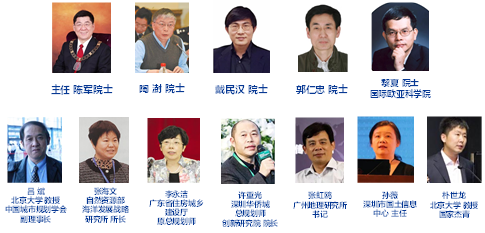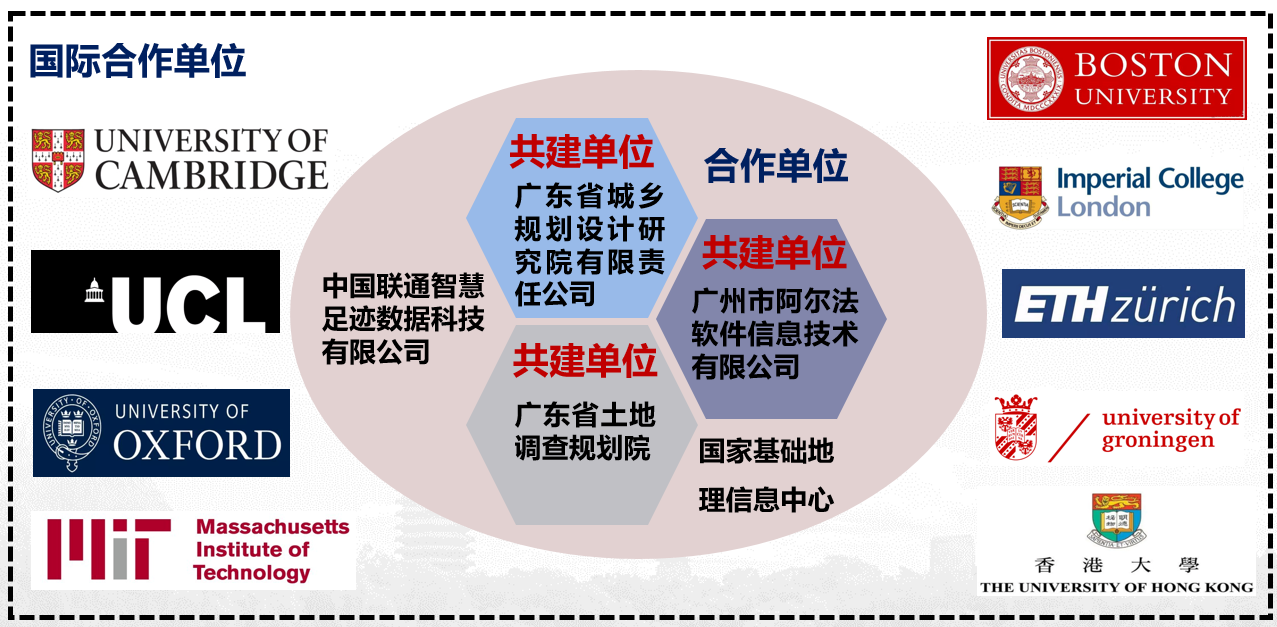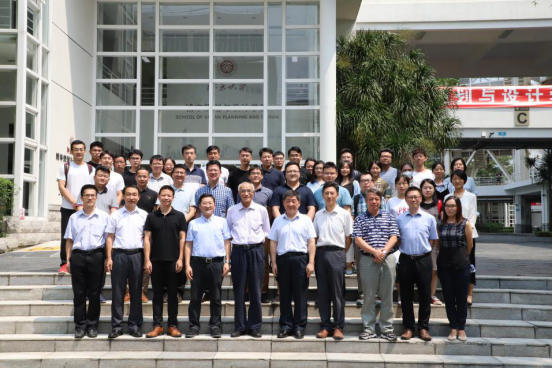Key Laboratory of Earth Surface System and Human-Earth Relations, Ministry of Natural Resources of China
On July 23, 2021, the Ministry of Natural Resources of China officially announced the list of key laboratories (Natural Resources Office Document [2021] No. 51). The Key Laboratory of Earth Surface System and Human-Environment Relations, Ministry of Natural Resources of China (hereinafter referred to as the "Laboratory") was formally approved.
The Laboratory is hosted by Peking University, with the primary construction unit being the School of Urban Planning and Design, Peking University Shenzhen Graduate School. Collaborative construction units include the Guangdong Provincial Urban & Rural Planning and Design Institute Co., Ltd., Guangdong Provincial Land Surveying and Planning Institute, and Guangzhou Alpha Software Information Technology Co., Ltd. The Laboratory is supervised by the Department of Natural Resources of Guangdong Province, with participating institutions such as the National Geomatics Center of China and China Unicom Smart Footprint Data Technology Co., Ltd.
The Laboratory focuses on three critical domains: quantitative simulation, scientific evaluation, and synergistic optimization of human-environment relations, aiming to establish a first-class platform for foundational theories and technological innovation in human-environment relations to support territorial spatial planning. It serves the Guangdong-Hong Kong-Macao Greater Bay Area (GBA) and builds demonstration bases for integrated land-sea-human collaborative governance.
The Laboratory is structured around four primary research areas:
Land Surface System and Human Activity Perception
Human-Environment Relationship Analysis and Simulation
Quantitative Sustainability Evaluation
Territorial Spatial Strategy and Pattern Optimization
Innovating Cutting-Edge Fundamental Theories and Breaking Through Core Technologies
The Laboratory employs methodologies such as multi-source spatiotemporal big data analysis, indicator evaluation, and model simulation to address globally leading scientific challenges. It investigates key scientific theories and core technologies for high-quality development of territorial spatial patterns. Research includes:
Identifying human activity distribution characteristics constrained by land surface systems.
Studying interactive processes and dynamic mechanisms between human activities and land surface systems.
Exploring critical factors and mechanisms underlying resource supply-demand, spatial matching, and environmental constraints in territorial spatial planning.
Revealing evolutionary patterns of "elements-patterns-functions" in human-environment relations, with a focus on coupling mechanisms between urban, agricultural, ecological spaces, and human production/living activities.
Developing multi-scale sustainability theories and evaluation frameworks for territorial spatial patterns oriented toward a habitable planet.
Creating technological systems for human-environment pattern recognition and scientific diagnostics.
Building a spatiotemporal big data-driven quantitative simulation platform for human-environment relations.
Establishing a dynamic perception, simulation, and prediction platform for human-environment relations and sustainable development in the GBA.
Serving National Strategic Needs and Supporting GBA Development
The Laboratory aligns with the national strategic demands of the GBA, targeting international advanced standards. It researches models, planning technologies, and methods for optimizing the land-sea-human systems in the GBA, conducts applied demonstrations for integrated territorial spatial governance and high-quality development, and explores institutional innovations for territorial spatial governance under China’s new era of comprehensive openness. Current priorities include:
Regional integration and spatial organization of metropolitan areas.
Synergistic development pathways for spatial-population-ecological systems in the GBA.
Models for improving low-efficiency land use and urban renewal.
Integrated land-sea coordination and coastal zone management.
Smart and livable city construction.
Low-carbon development of the GBA urban agglomeration.
Institutional and mechanism innovations for territorial spatial planning and governance.
Academic Committee
The Laboratory’s Academic Committee is chaired by Academician Jun Chen (Member of the Chinese Academy of Engineering, First-Class Professor at the National Geomatics Center of China, and Visiting Professor at the School of Urban Planning and Design, Peking University). Committee members include renowned experts: Bin Lü, Jie Fan, Xiaoling Zhang, Xia Li, Yuanwu Zeng, Yanqing Qiu, Haiwen Zhang, Haiou Zhang, Xianjin Huang, Shilong Piao, Xingping Wang, Qingming Zhan, Yongjie Li, Wei Sun, and others.
Laboratory Director
The Laboratory is directed by Professor Pengjun Zhao (Dean of the School of Urban Planning and Design, Peking University Shenzhen Graduate School).


学术委员会

Cooperative Institutions

Symposium on Construction and Operational Plan of Key Laboratories Successfully Held
Related Links for the Ministry of Natural Resources (MNR):
http://gi.mnr.gov.cn/202107/t20210730_2674364.html